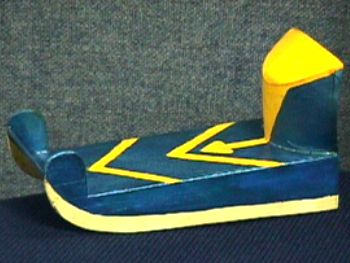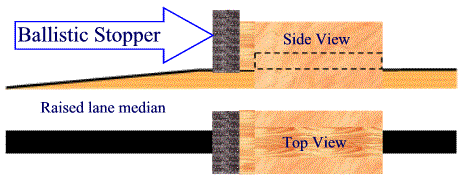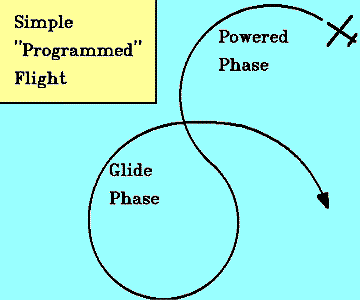| "All my discoveries have been made in an answer to prayer" Sir Isaac Newton (1642-1727) |
|---|
It was said in midevial times that the process of scientific discovery is a privilege only for kings. In our fast paced world, who has the time and resources to discover anything except what the latest things are on the market? Fortuneately, some areas of inquiry that are inexpensive and relavant to many people are still largely unexplored in any rigorous manner. We have been very fortunate to be able to examine some of these and make some "progress".
We record here some of our experiences with discovery on a very small and in reality, insignificant way. Never-the-less, we will remember these things as one way God touched our lives with a thirst for the much greater things He wants us to discover through knowing Him.
In late 1997 we got the idea that it might be possible to hydroplane a breath blown regatta boat. Our Senior Engineer sketched out the critical relations between boat weight and lift produced at various speeds. Since hydroplaning is skimming the water surface, not flying, he wasn't sure that the resulting balance ratios were valid. They were certianly marginal at the fastest speeds measured for catamarans, somewhat less than 2 feet per second. Much faster speeds would need to be maintained for a 2 ounce boat to hydroplane.

Then there was the reflected wave to worry about. It took a little longer than 3 seconds for the initial wave to hit the other end and bounce right back toward the boat threatening to swamp it. The hydroplane would have to beat that wave! Spurred on by the possibility, albeit marginal, we made a 2 ounce, 6 inch by 2.5 inch flat hull with the bow turned up out of corrugated cardboard. Coating it with a liquid plastic delayed testing for two days. Finally, we set up a water filled trough and slipped the boat in.
Thinking that it might only be possible for an adult to accomplish, our Senior Engineer was the first to blow. What a thrill! In one breath the boat cleared half the 10 foot length and was easily past the wave. The second breath didn't come because of all the rejoicing. More runs were made until we noticed water had penetrated the hull. The boat now weighed 3 ounces but it was still hydroplaning!
The Lab Manager, Junior Engineer and our Assitant all tried piloting the soggy craft with diminishing success. They decided to stick with catamarans for their club races that year. Catamarans won the day, but our new wooden demonstrator of "tomorrow's technology" stole the show and the Blue Wave started taking over!

A close second to the hydroplane is the Grand Prix ballistic car stopper. Don't you hate it when you show up at a race and they're using a pillow to stop the cars? We've seen cars flipped and sprawled, squashed and broken. Do you spend a lot of time fussing over wheel alignment? Forget it with a pillow to stop your car. We've seen a number of other car catchers too. They didn't treat our cars any better.
A ballistic stopper has a pad on the front to cushion the initial impact of the car. But that impact slides it backward. Rubber on an elevated lane median provides the friction to oppose the stopper's sliding. In about 6 inches the car has transferred all of its energy to the stopper so it does not bounce back nor fall off the elevated, rubber covered lane median.
We knew this type of stopper must work, it was just a matter of figuring out how heavy one had to be and how to provide enough friction on the elevated lane median to stop both the car and the stopper in a short distance. Because of the uncertainty of the friction coefficients involved for the front foam rubber pad and the innertube rubber covering, we decided to go directly to prototype and test.
We made the sliding board as an extention of our track. We tried stopping cars with just a raised lane median covered with innertube rubber. With even the slightest incline, the cars became airborne, we had invented a pinewood car launcher! A box with runners to keep it centered on the lane median and a front pad was next. We loaded the box with sand in a plastic bag. The first cars bounced off recklessly ending up in other lanes, flipped over etc.. We had successfully demonstrated all the evils we wished to avoid. By removing more and more sand we found a point where the stopper worked well.
It was then a matter of calculating how much pine wood weighed that much and designing a new break with that amount of wood in it. We made four copies and have been "break" free ever since.
Much of what we attempt is utterly useless! But one of our most complicated, intriging and totally useless discoveries was one we devoted a whole page to in our growing Grand Prix Science Manual. The idea starts out simple, make the distance to the finish line shorter and get there quicker! This makes perfect sense if you can keep the speed the same, but it turns out the car has to go slower - but it still wins! Well, it would win if the other random events that happen in a race were much smaller. But because those random bumps against the lane median, etc., affect the car much more, no one is likely to improve their race time overall to make it worthwihile.
To maximize this improvement, raise the center of mass 2.4 inches above the rear axle. Doing that will itself be a great challenge, but any progress toward it will theoretically help. The effect is improved if the center of mass is over the rear axle. And if your track has a flat part 4 times the length of its ramp, it should be no advantage at all. Remember, we told you it would probably NOT be worth doing! But it is interesting to know about.

Speaking of interesting and still useful, we think of the simple programming of a rubberband powered airplane. We discovered this yet another way - reading at the library! It's pretty simple and easy to do. A hobby airplane has too much power for level flight when launched. So flaps set to turn the airplane say to the left during glide, won't be very effective during the powered part of the flight.
To make the airplane turn the opposite way at hand launch, ones bends or shims the propeller base to point the propeller the other way. So your airplane climbs in one direction and glades in the other!
Many interesting relationships are formed in the mathematical models of these hobby systems. Knowing how to get at them and interpret them is quite an art. In many cases, the mathematics is just too complicated or even impossible to solve. But once in a while, a simplicity emerges that makes all the trouble worth while. Such was the case with the equation for optimal fill of a water rocket and the simple condition for the "break-even" point for using weighted wheels on a Grand Prix car. Both were found by taking derivatives, setting them to zero to find critical points and then solving for the variable of interest. This process, a rather typical calculus method, often makes the equations much more complicated and does not garantee that the variable of interest can be solved for. So yeilds are typically low for most real world problems.
The optimal fill equation, was already complicated by using the conditions for energy transfer with no heat loss, although the air in the rocket changes temperature. Having done the simpler case where the air temperature did not change at all, gave a very simple result, so it gave us some hope. Indeed, to our great joy, the more complicated equation reduced down and finally simplified to a fairly simple form.
Though the search for the critical point for using wheel weight in a Grand Prix car started out about the same, the complexity resolved itself in a quite different way. In this case, the equation to be set to zero involved a couple of factors on the one side of the eqaution. This split the equation into as many smaller, simpler equations as there were factors. The smallest factor was the one with 4 times the flat length minus the ramp length. So the 4 to 1 ratio was born. To try this one, you'll need a track that has a flat more than four times its ramp length, like one of the long aluminum tracks being sold. A car with balanced weight around the center of the rear wheels should start slower, but it should rummble by all the others just past the critical point 4 ramp lengths down the flat part of the track!
We are still a bit mystified why the ramp length is involved and that the ratio involves small, whole numbers. Imagine how surprised we were to discover this same 4 to 1 ratio when exploring the effect of raised center of mass. May be someone will be able to explain it to us someday.
Lastufka Labs - |
Logbook |
Copyright © 2000 Michael Lastufka, All rights reserved worldwide. |